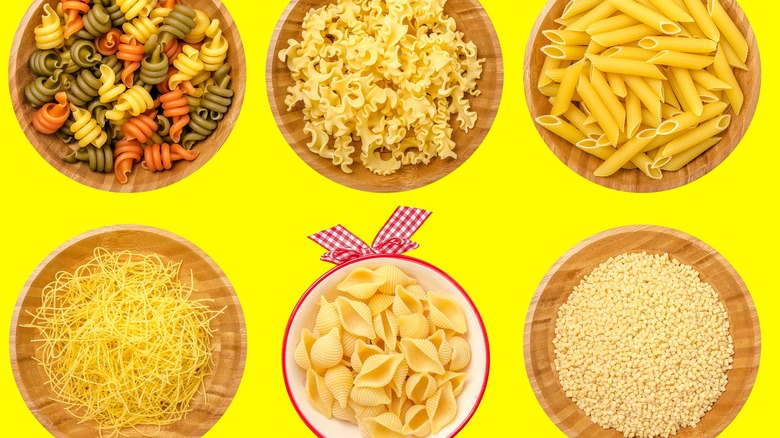Lidia Bastianich's Tips For Buying The Best Dried Pasta
More often than not, if you're making fettuccine alfredo or spaghetti and meatballs, you're using dried pasta. It's so easy to make: Boil some salted water and empty a box of pasta into the pot. Once the pasta is al dente (be careful not to overcook your pasta), drain into a colander and serve with the sauce of your choice, whether jarred pasta sauce or homemade. And voilà, you have an easy weeknight meal.
Making a meal using dried pasta is not as much a modern convenience as you may think. According to History of Spaghetti, Sicily was the first known place to eat dried pasta, as recorded in the year 1154. (Pasta itself is much, much older, however, dating back to around 2,000 years ago.) While most often associated with Italy, pasta has become a huge part of the global diet. Pasta consumption is on the rise around the world, according to Food Business News, with the International Pasta Organisation reporting that 16.9 million tons of the food was made globally in 2021. North Americans, who love to make dishes like lasagna, macaroni and cheese, and manicotti, consume 12.9% of the world's pasta.
With that much pasta out there, how can you ensure that you're getting the best one on the shelf? It's easy to do if you know what to look out for.
Color and texture matter
Chef Lidia Bastianich is an expert in Italian cuisine, which, of course, includes pasta. She told People that when shopping for dried pasta, it's best to look for pasta that has a golden-yellow color and to stay away from pasta that has white spots, which indicates that the item is old. Also, avoid purchasing pasta that appears to have flour dust on it. When picking up a box of pasta, look through the little cellophane window to verify that pieces aren't chipped or broken, Bastianich said.
The ideal type of pasta will have a rougher texture, because sauce does not adhere well to glossy pastas, Bastianich shared with Today. For the same reason, Bastianich advises against smooth pastas, which sauce won't cling to as readily. A quality dried pasta should be made from only semolina flour and water, Bastianich shared with Today.
Next time when you are shopping for pasta at the grocery store, remember Bastianich's tips for the perfect pasta purchase and enjoy your dinner, just as the Italian chef would.

